SLAC sends off woven grids for LUX-ZEPLIN dark matter detector
Four large meshes made from 2 miles of metal wire will extract potential signals of dark matter particles.
By Manuel Gnida
The ultra-sensitive LUX-ZEPLIN (LZ) detector is scheduled to begin its search for elusive dark matter next year. At its core: a large tank filled with 10 metric tons of liquid xenon whose atoms would produce telltale signals when struck by dark matter particles. Inside the tank, four high-voltage grids – fine circular metal meshes, each 5 feet in diameter – are needed to extract these signals.
Over the past few months, the LZ team at the Department of Energy’s SLAC National Accelerator Laboratory, which is part of the international LZ collaboration of 250 scientists from 37 institutions, has carefully woven the grids from 2 miles of thin stainless steel wire, and yesterday they sent the last one on its way to the Sanford Underground Research Facility (SURF) in South Dakota, where the LZ detector is being assembled.
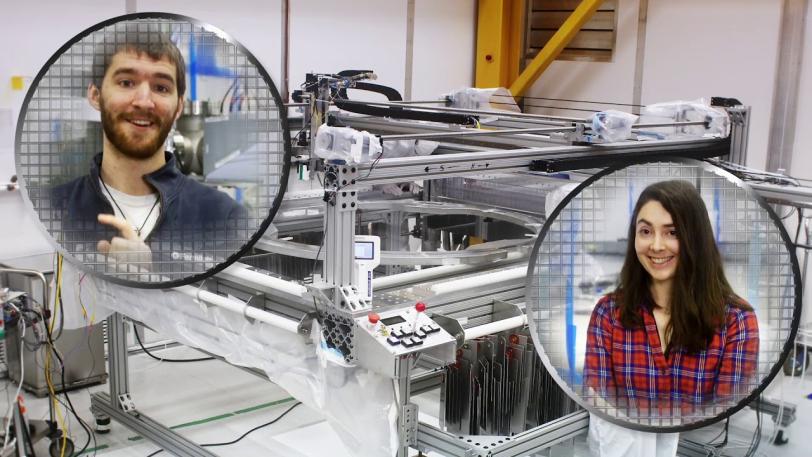
Weaving the search for dark matter
SLAC sends off four custom-woven grids for the LUX-ZEPLIN underground dark matter detector.
Farrin Abbott/SLAC National Accelerator Laboratory
"Completion of the delivery of the grids from SLAC is one of the most critical project milestones,” said LZ Project Director Murdoch “Gil” Gilchriese of DOE’s Lawrence Berkeley National Laboratory, which leads the project. “Congratulations to the grids team.”
The quality of the grids is critical to LZ’s performance, and making them was a major challenge, said Tom Shutt, one of the directors of SLAC’s LZ team: “It took us about four years to develop the design and to manufacture and test them. It’s exciting that we’re now integrating them into the detector.” The team’s efforts included inventing a clever way of weaving the grids from metal wires.
Rare collisions with dark matter
Scientists have overwhelming evidence that the matter we can see makes up only a small fraction of the universe. About 85 percent of matter is invisible and interacts with everything else almost entirely through gravity. This mysterious substance is called “dark matter,” and researchers believe it’s composed of particles, just like ordinary matter is made of fundamental particles. Yet, dark matter’s building blocks have yet to show up in experiments.
Scientists have been trying to detect dark matter particles by putting tanks of liquefied noble gases, like xenon, deep underground. Most dark matter particles rush through these tanks unhindered while traveling through our planet as if it were made of air. But from time to time, scientists theorize, a particle might collide with a noble gas atom and produce a signal that reveals dark matter’s presence and nature.
As the newest generation of this type of “direct detection” dark matter experiment, LZ will be hundreds of times more sensitive to a particular type of dark matter candidate, called weakly interacting massive particles (WIMPs), than its predecessor.
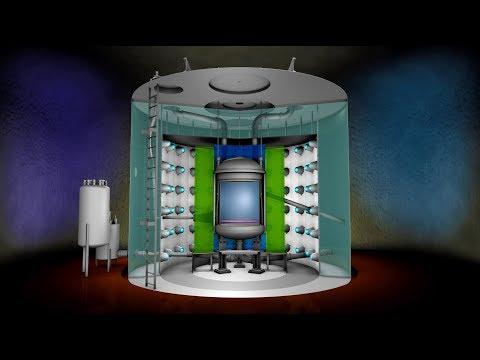
Dark Matter Hunt with LUX-ZEPLIN (LZ)
SLAC is helping to build and test the LUX-ZEPLIN or LZ detector, one of the biggest and most sensitive detectors ever designed to catch hypothetical dark matter particles known as WIMPs.
Greg Stewart/SLAC National Accelerator Laboratory
From collisions to flashes of light
If and when a WIMP particle hits a xenon atom in LZ’s tank, two things will happen: The atom will emit a flash of light that is recorded by nearly 500 light-sensitive detectors, called photomultiplier tubes (PMTs), at the top and bottom of the tank. The atom will also release electrons, and that’s where the high-voltage grids come in.
Two of the grids – the cathode at the bottom and the gate at the top – will help create an electric field that pushes electrons through the liquid xenon toward the top of the tank. There, they’ll be extracted from the liquid by a field between the gate and anode, which sits just below the top PMT array within a tightly controlled layer of xenon gas. In the gas, the electrons create another flash of light. A characteristic combination of two light flashes signals the arrival of a WIMP.
“Establishing the electric field is critical to be able to distinguish between potential dark matter signals and background signals,” said Ryan Linehan, a Stanford University graduate student on SLAC’s LZ team.
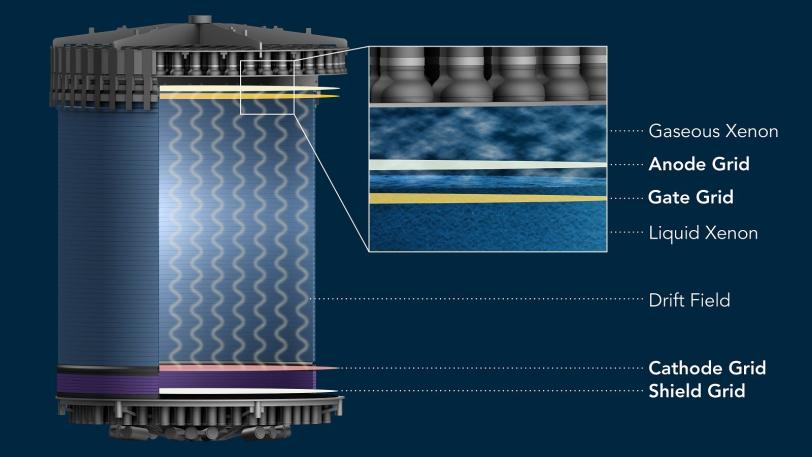
A fourth grid at the bottom of the xenon tank will shield the bottom PMT array from the high electric fields above.
Weaving a ‘metal fabric’
To build the grids, LZ engineers and scientists had to solve a number of technical challenges. For instance, the grids can produce the required uniform electric field only if they stay very flat when mounted horizontally inside the xenon tank. They must also be transparent enough so that they don’t stop light from reaching the PMTs. To further complicate things, there are no commercially available grids in the size the LZ team needed, so they had to find a way to build their own.
The crucial idea came from SLAC mechanical engineer Knut Skarpaas. He designed a loom similar to those used for weaving fabric. But instead of thread, LZ’s loom wove metal wires about the size of a human hair into fine meshes with wires only millimeters apart (see video at the top of this article). And instead of weaving the “fabric” on an ordinary production floor, the loom operated in a clean room to avoid contamination.
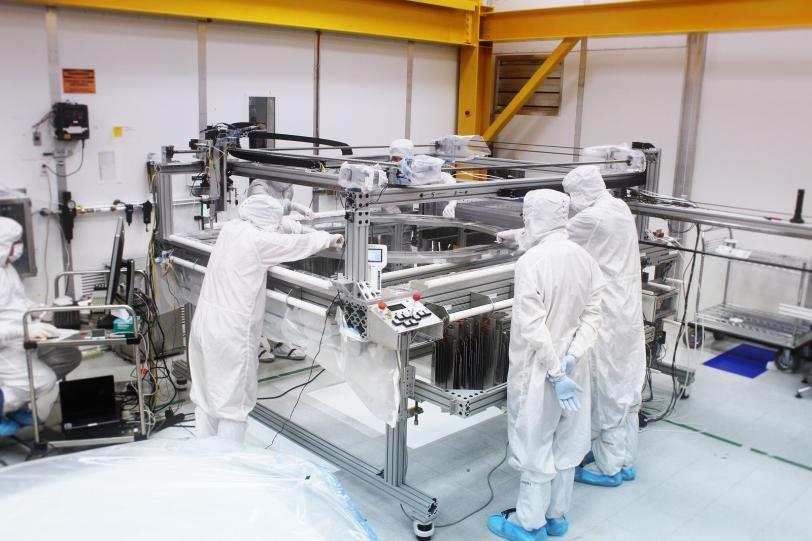
Ramping up the voltage
Once a metal mesh was woven, LZ folks sandwiched it between two metal rings and cut out a circular piece of the right size. Then, they carefully transferred the circular grids one by one to a customized test vessel and checked their performance.
“Nobody had studied the behavior of such large grids under high fields and in this particular xenon environment before, so there was a lot we had to test and learn,” said Rachel Mannino, a postdoctoral researcher at the University of Wisconsin-Madison working with SLAC’s LZ team. “We were particularly worried about electron emissions from the wires, which can occur under high fields and would generate false signals in the detector.”
The tests were done in xenon gas under high pressure. While slowly ramping up the voltage on the grids, the researchers used PMTs to search for potential hotspots where electrons leave the metal mesh. The results allowed the team to define grid operating conditions that minimize unwanted electron emissions.
In addition, the gate grid was chemically treated to further reduce those nuisance emissions and improve the experiment’s ability to search for WIMPs with lower masses.
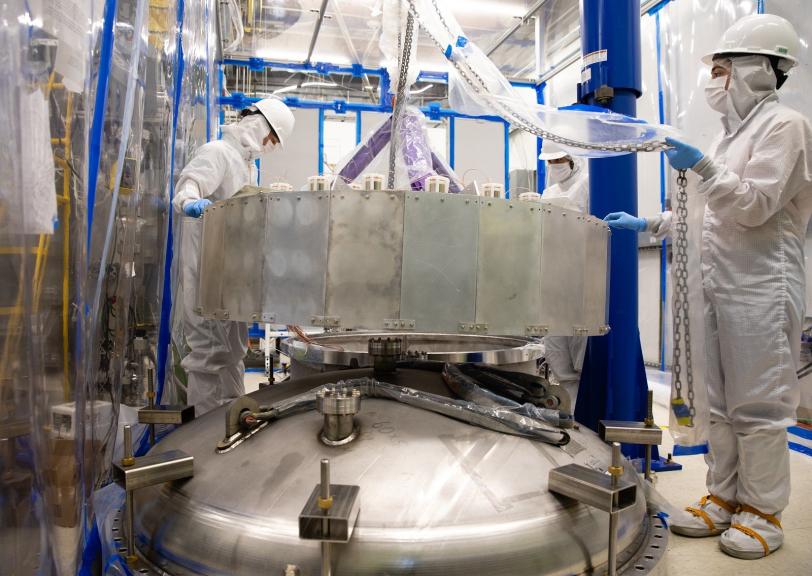
Getting ready for the dark matter hunt
With the last grid on its way to SURF, the LZ team is now ready to put everything together.
“We’ve recently begun building the detector core from the bottom up,” said SLAC’s Tomasz Biesiadzinski, one of the scientists in charge of detector integration, who splits his time between SLAC and SURF. “In the fall, we’ll move everything underground, where LZ’s outer layers are already being assembled, and integrate and connect all the parts. After all the years of preparation we’re finally getting close to collecting data.”
LZ’s dark matter hunt is set to begin sometime next year. Then, it’ll be up to the WIMPs to show up.
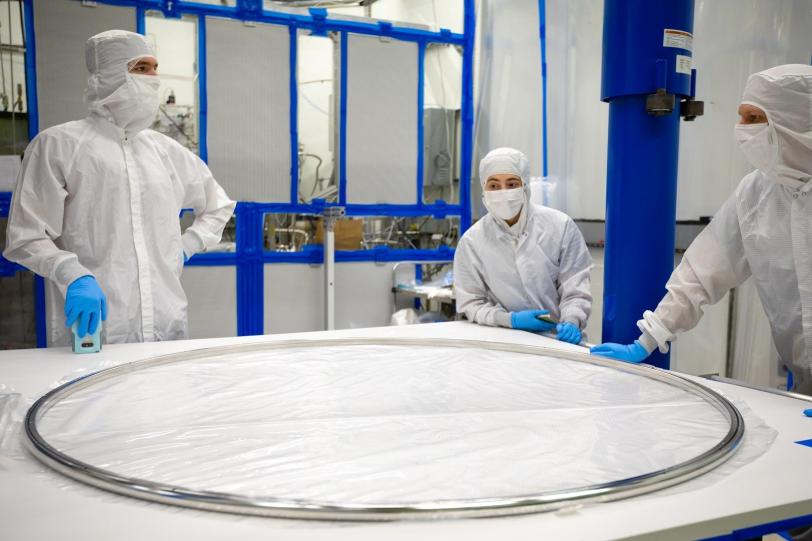
Major support for LZ comes from the DOE Office of Science; South Dakota Science and Technology Authority; the U.K.’s Science & Technology Facilities Council; and from collaboration members in South Korea and Portugal.
For questions or comments, contact the SLAC Office of Communications at communications@slac.stanford.edu.
About SLAC
SLAC National Accelerator Laboratory explores how the universe works at the biggest, smallest and fastest scales and invents powerful tools used by researchers around the globe. As world leaders in ultrafast science and bold explorers of the physics of the universe, we forge new ground in understanding our origins and building a healthier and more sustainable future. Our discovery and innovation help develop new materials and chemical processes and open unprecedented views of the cosmos and life’s most delicate machinery. Building on more than 60 years of visionary research, we help shape the future by advancing areas such as quantum technology, scientific computing and the development of next-generation accelerators.
SLAC is operated by Stanford University for the U.S. Department of Energy’s Office of Science. The Office of Science is the single largest supporter of basic research in the physical sciences in the United States and is working to address some of the most pressing challenges of our time.





